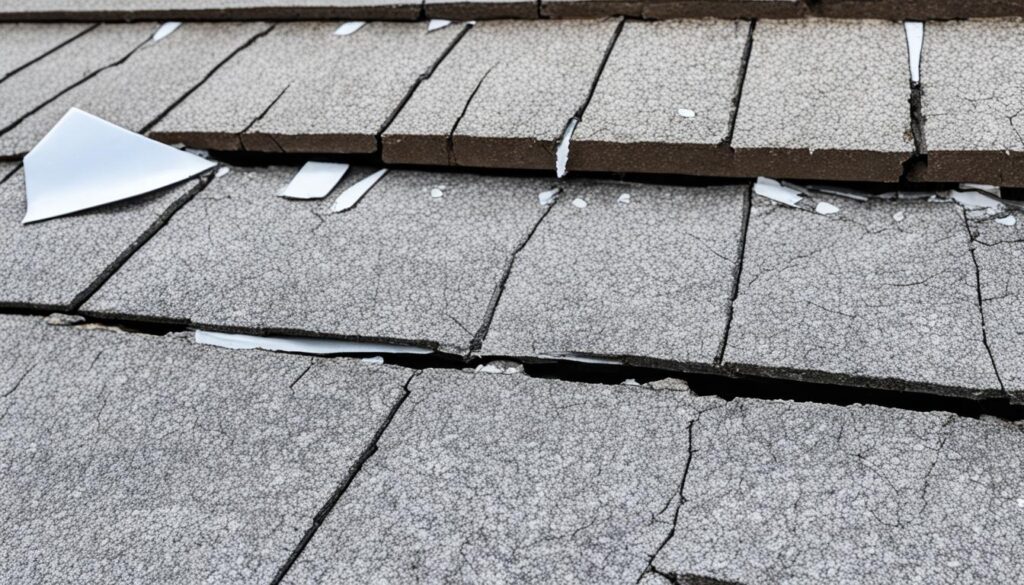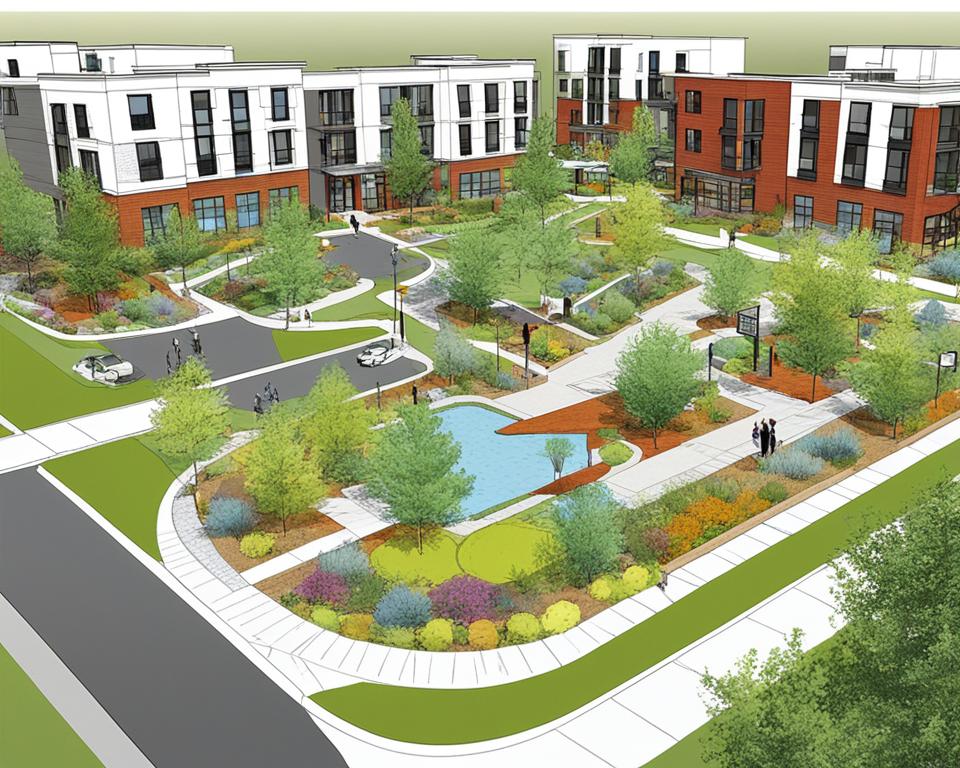In the midst of burgeoning skyscrapers and expanding residential developments, understanding neighbour construction laws becomes paramount for maintaining peace and safeguarding homeowners’ rights. If you find yourself grappling with the challenges of property line construction or seeking clarity on construction disruption rights, you are not alone. This guide illuminates the most pressing FAQs on neighbours’ rights during construction, providing a blend of legal insight and practical advice to navigate the complexities that arise when new structures take shape next door.
Key Takeaways
- Learn about safeguarding homeowners’ rights amidst nearby construction activities.
- Discover how to address and resolve property line construction disputes.
- Understand the essentials of neighbour construction laws to uphold your tranquility.
- Equip yourself with knowledge on construction disruption rights to mitigate impact.
Understanding Your Rights as a Neighbor During Nearby Construction
As residential landscapes continue to evolve, homeowners frequently face concerns related to property boundary laws and the emanating impact of construction on neighbor construction privacy. Whether it’s the thud of a hammer or the silhouette of a new structure piercing the skyline, it’s vital to comprehend the scope of one’s rights in such scenarios. This section delves into the vital aspects of property delineation, the hallowed concepts of light and privacy, as well as deciphering the intricacies of local zoning regulations that shape residential area construction rights.
Legal Boundaries and Property Lines
Understanding the finite details of property boundary laws can prevent disputes and provide legal pathways when issues arise. A professional survey is often the first step in this process, producing legally sound boundaries and serving as an invaluable resource during disputes or when asserting homeowner rights.
- Title Search: Dive into county records to affirm property boundaries documented by previous deeds.
- Survey Analysis: Commission a licensed surveyor to establish precise boundary lines.
- Dispute Resolution: Understand the remedies available, from amicable negotiations to legal injunctions, in case of encroachment.
In the grid below, find an overview of standard practices for addressing property line concerns:
| Action | Purpose | Consideration |
|---|---|---|
| Conduct a Survey | To officially ascertain property boundaries. | May be necessary for constructing fences or settling disputes. |
| Install Identifiable Markers | To visually mark the confines of your property. | Helps to avoid accidental infringements by neighbors. |
| Discuss with Neighbors | To maintain good relationships and understanding. | Early conversations can circumvent future disputes. |
| Seek Legal Advice | For an expert interpretation of property law. | Advisable when agreements cannot be reached. |
Access to Light, View, and Privacy
New construction can alter a neighborhood’s dynamic, affecting access to light, views, and privacy. Laws such as the ‘right to light’ recognize the importance of sunlight and vistas to living spaces and could provide a channel for maintaining these amenities amidst new developments.
- Consult with local building authorities regarding neighbor construction privacy concerns.
- Understand potential negotiations which might include design alterations or timing of construction.
Navigating Local Zoning Laws for Residential Areas
Local zoning regulations serve as the blueprint that dictates permissible construction activities within a community. These laws ensure that the character and utilization of land are compatible with the local government’s plan for development and can directly impact residential area construction rights.
- Participate in public zoning meetings to voice any concerns or support for proposals.
- Review zoning variances and permits to understand potential changes in your neighborhood.
- Consult with a zoning attorney for significant concerns regarding your rights or potential breaches.
Equipped with knowledge and the right approach, neighbors can safeguard their interests, coexist with new developments, and contribute to building a harmonious community. The key lies in being proactive and well-informed.
Dealing with Construction Noise and Disruption
When the cacophony of nearby development encroaches on your daily life, it’s vital to know your rights and the measures you can take to preserve your peace. Acknowledging construction noise regulations and advocating for your noise ordinance rights are the first steps towards negotiating construction times and effectively handling excessive noise complaints.
What Constitutes Excessive Noise?
Understanding the threshold of what is considered excessive noise is essential in evaluating whether construction activities are breaching local guidelines. Noise levels typically allowed during working hours are set by municipal construction noise regulations, but when these exceed local standards, it signals a violation that can be addressed through proper channels.
- Determine decibel limits: Establish the acceptable noise levels prescribed by local laws.
- Document the disturbance: Keep a record of times and durations when noise is excessive.
- Seek expert advice: A sound level meter or professional assessment can substantiate your claims.
Negotiating Construction Hours with Developers
It’s possible to strike a balance between construction needs and the comfort of residents by negotiating construction times. While developers generally adhere to predetermined schedules, open communication can lead to mutually agreeable adjustments.
- Initiate dialogue: Approach developers with concerns regarding noise and propose alternatives.
- Contract review: Assess any construction agreements that stipulate permitted working hours.
- Compromise and consensus: Aim for a solution that mitigates impact while allowing progress.

Finding Out About Noise Ordinances in Your Area
To enforce your rights against excessive construction noise, familiarize yourself with the local noise ordinances governing your community. These ordinances are the framework within which you can craft your response to disturbances.
- Research local statutes: Visit your city or county’s official website for ordinance details.
- Contact municipal offices: Engage with local officials to clarify the nuances of the law.
- Enforcement: Learn the proper procedure to submit excessive noise complaints.
By understanding your rights and the appropriate steps to take, neighbours can effectively address the disruptions caused by construction, ensuring a fair balance between development and residential tranquility.
Neighbours Rights During Construction: Protecting Your Property
As urban development continues to intensify, the issue of property protection during construction is of growing concern for many homeowners. Being equipped with knowledge and strategies for construction damage prevention can offer peace of mind and real safeguards for your property. Below, we explore essential preventative measures and responses to construction-related damages.
Homeowner construction safeguards start with anticipation and preemptive action. Prior to the commencement of any nearby construction work, it’s prudent for property owners to document their property’s condition. This involves taking date-stamped photographs or video recordings of the existing state of your property, focusing on areas that might be susceptible to damage due to construction activities.
“Prevention is better than cure. Documenting your property’s condition is a crucial first step in protecting your asset during nearby construction.”
Furthermore, building a rapport with the construction company can be invaluable. Open communication lines allow for sharing concerns and establishing guidelines for maintaining the safety and integrity of your property.
- Document pre-construction conditions with clear, date-stamped images.
- Communicate with the construction company and share specific concerns.
- Request information on the measures they will take to prevent damage.
In the unfortunate event that your property suffers damage from construction activities, it is important to respond swiftly and methodically:
- Immediate Documentation: Capture the damage with date-stamped photographs or videos as soon as it’s noticed.
- Contact the Construction Company: Report the damage to the construction manager, seeking an immediate response and remedies.
- Insurance Consultation: Reach out to your insurance provider for guidance on potential claims and coverage issues.
Below is a tabulated overview of key actions to take for proactive property protection:
| Action Item | Description | Benefits |
|---|---|---|
| Pre-construction Documentation | Recording current property conditions. | Serves as evidence if damage occurs. |
| Engaging with Construction Teams | Establishing communication regarding safety protocols. | Prevents misunderstandings and promotes cooperative relationships. |
| Monitoring During Construction | Keeping a vigilant eye on ongoing work. | Allows for quick detection and reporting of any issues. |
| Reporting and Repairing Damage | Notifying parties involved and commencing the repair process. | Ensures timely restitution, potentially averting further damage. |
Property protection during construction is not simply a matter of vigilance, but also of having robust processes in place to deter damage and address any adverse consequences promptly. Homeowners are advised to remain engaged and informed throughout the process, taking an active role in the construction damage prevention of their homes.
Communication and Resolving Disputes with Construction Entities
When faced with construction-related issues, establishing transparent and professional lines of communication is crucial. In this section, we will explore how to engage effectively with construction companies and maneuver through potential disputes. We’ll also uncover the intricacies of alternative dispute resolution construction methods like mediation and arbitration, and when it’s necessary to escalate the situation to legal action.
Best Practices for Approaching Construction Companies
Communicating with contractors and construction companies requires a strategic approach. Initiate contact with a clear outline of the issues and the outcome you desire. Document all interactions, including emails, calls, and in-person meetings, to maintain an accurate record of the dialogue and any agreements reached. Presented below is a guide to nurturing a cooperative dynamic with construction entities:
- Identify the Right Contact: Seek out the individual with decision-making power.
- Express Concerns Clearly: Articulate issues factually and without emotion.
- Propose Solutions: Offer constructive suggestions to resolve issues.
- Keep Records: Maintain detailed notes and correspondence as documented proof.
Mediation and Arbitration: Alternative Dispute Resolution
Before initiating litigation, exploring mediation in construction disputes and arbitration can be a cost-effective and less adversarial solution. These alternative methods allow disputing parties to resolve conflicts with the help of a neutral third-party. Understanding when to use each can significantly impact the resolution process:
| Resolution Method | Key Characteristics | Advantages |
|---|---|---|
| Mediation | Facilitated negotiation aimed at mutual agreement. | Non-binding, promotes cooperation, maintains relationships. |
| Arbitration | A binding decision made by an impartial arbitrator. | Quicker resolution than court, binding outcomes, expert arbitrators. |
When to Consider Legal Action and How to Prepare
When communications falter and mediation efforts do not suffice, taking legal action against builders may become necessary. Recognize this juncture by the construction company’s refusal to engage in alternative dispute resolutions or by their persistent non-compliance. Preparation is key; this involves assembling evidence such as contracts, communication records, and expert testimony. Consult with experienced legal counsel to understand the feasibility and implications of your case. The following checklist will help ensure you are ready for legal proceedings:
- Compile all Relevant Documentation.
- Chronologically Organize Evidence of Disputes.
- Engage Qualified Legal Professionals.
- Evaluate the Costs vs. Benefits of Litigation.

Compensation for Damage or Loss of Property Value
When the hum of construction morphs into the horror of damages, property owners find solace through compensation for construction damage. Whether a cracked foundation or diminished curb appeal, residents may face a daunting task: how to claim damages from construction. This evaluative roadmap will guide you through the pivotal steps to secure what’s rightfully yours.
The first measure in this uphill task is meticulously documenting the damage. While the buzz of saws spins tales of urban sprout, the exhaustive details you record lay the groundwork for a successful claim. Photographs, professional evaluations, and even journal entries chronicling the construction process work in concert as incontrovertible proof of damage.
| Type of Documentation | Purpose | Expected Benefit |
|---|---|---|
| Photographic Evidence | To visually record the extent of physical damages. | Acts as a pre- and post-construction comparison. |
| Expert Assessment | Evaluations from construction or real estate professionals. | Provides a credible basis for claims of property value depreciation. |
| Repair Estimates | Cost analysis from contractors for repairing damages. | Quantifies the financial compensation required. |
| Daily Log Entries | Notes on construction activity and observed impacts. | Supports claims of ongoing negligence or damage. |
Stemming from this evidence is the pursuit of justice through a formal claim damages from construction process. A direct settlement with the at-fault party is often the initial and ideal resolution, eschewing the web of legal intricacies. However, when the tide of negotiation ebbs, small claims courts or real estate arbitration panels become the crucible of dispute resolution.
“The depth of your preparation determines the height of your compensation claim’s success.”
Legal fortitude enriches this pursuit. Invoking tort laws, property owners accentuate the negligence leading to construction damage. In instances of market devaluation, arguments grounded in property value depreciation due to an obstructed view or compromised aesthetics gain traction, backed by comparative market analyses.

Your stride towards resolution, laden with robust evidence and legal awareness, is the defining footpath to asserting your rights. Engage with the underpinnings of responsible urban development—where towering cranes and neighborly serenity coexist, and property owners are made whole for their losses.
Conclusion
Navigating the terrain of ongoing construction projects in one’s neighborhood can be a complex process requiring both vigilance and a proactive stance. By staying informed and taking an active role, you can not only safeguard your interests but also contribute to a productive dialogue around urban development. This final section underscores the merits of construction project awareness and the significant role that community involvement plays in the construction regulatory process.
Staying Informed and Proactive About Construction Projects
Whether it’s through joining a local neighborhood association, attending city council meetings, or subscribing to community bulletins, maintaining construction project awareness is instrumental for proactive neighbour rights. Resources such as municipal websites or community social media pages offer a treasure trove of information on upcoming projects. By staying current and informed, neighbors can prepare for potential disruptions and identify the appropriate channels through which to voice concerns or provide suggestions.
The Importance of Community Involvement in Construction Regulation
Community involvement in construction is more than just a cursory obligation – it’s a powerful conduit through which residents can shape the fabric of their locality. When neighbors band together to attend public hearings or form coalitions, they amplify their voice in the construction regulatory process. Such collective efforts are instrumental in advocating for neighbor-friendly construction practices, ultimately ensuring that development is not just equitable but also respectful of the existing community’s needs.
As we close this discussion, it is clear that proactive measures and community engagement are pivotal elements in navigating neighbor rights during construction. Cultivating a solid foundation of knowledge and unity stands as the linchpin to fostering not only a well-informed community but also an environment where development and domestic tranquility can coexist harmoniously.





